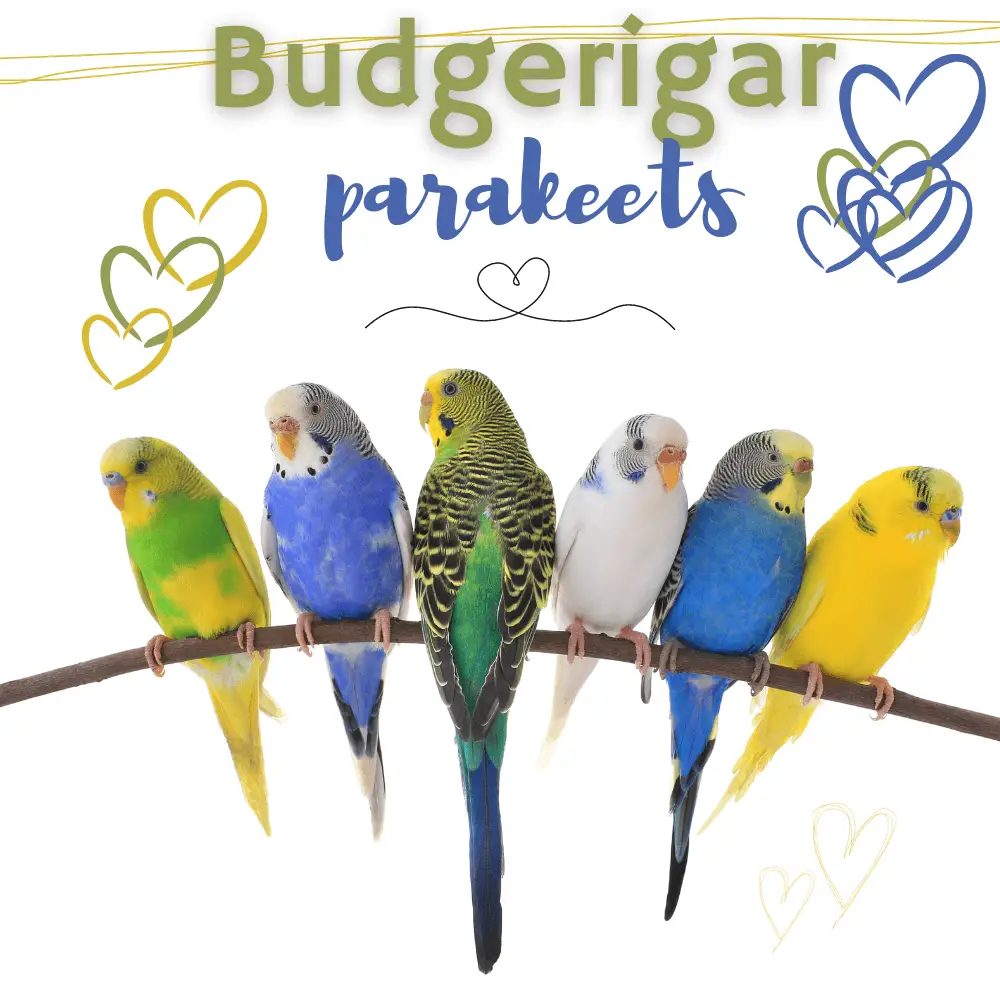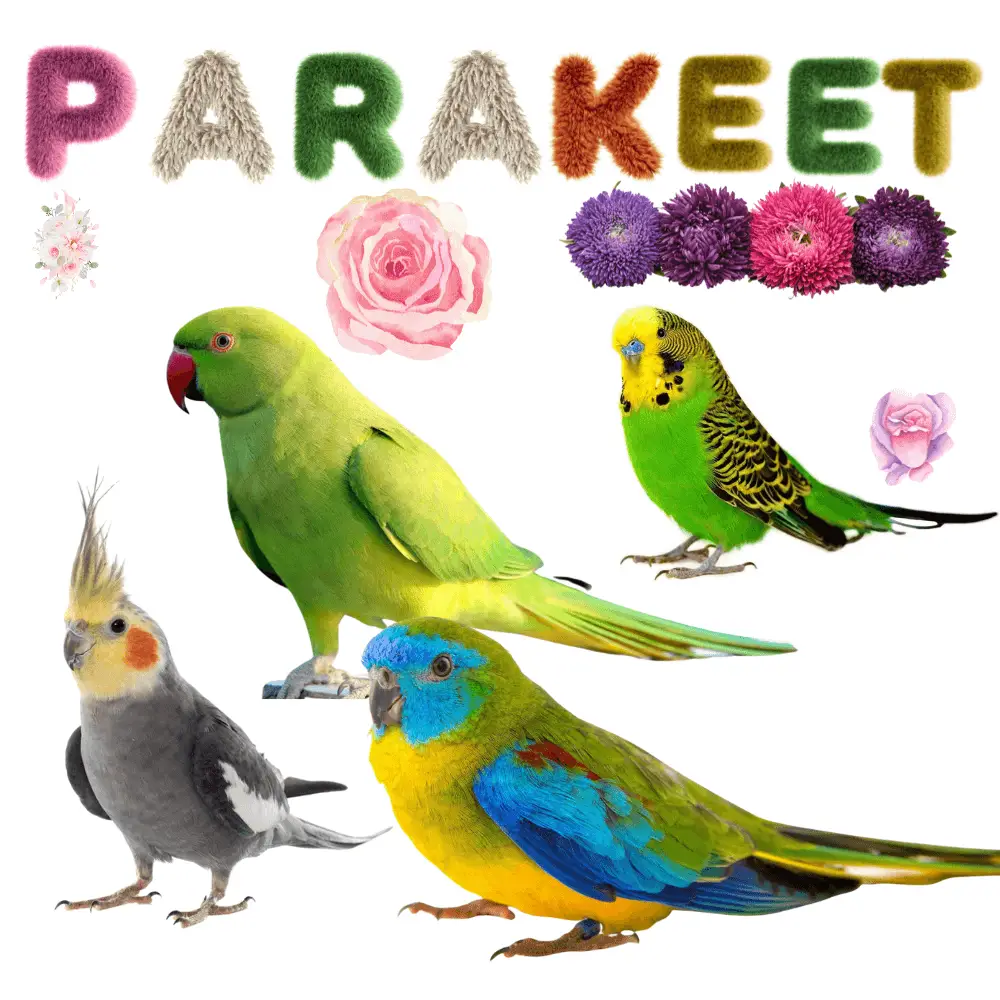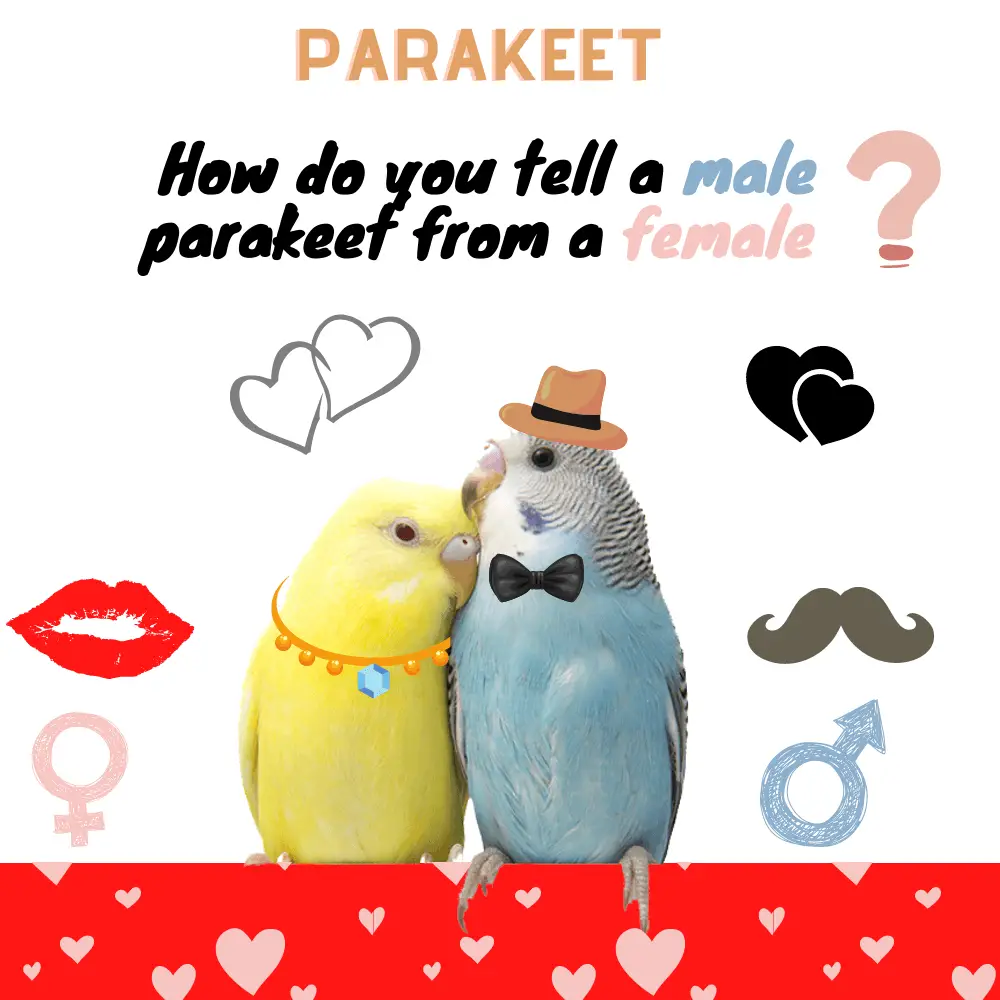Parakeet male and female: The parakeet is a pet bird that has become very popular over the years. It must be said that their sociable and friendly character as well as their attractive physique have everything to seduce! When you’ve made the decision to adopt a parakeet, you may wonder whether it’s best to choose a male or a female. Also, if you want to take two at the same time, does gender matter? Discover our advice to know which parakeet to choose, male or female.
Parakeet personality
Parakeets are gregarious animals. They live in pairs or in groups. It is therefore very advisable to adopt two at the same time ! Because an isolated parakeet can get bored quickly. A happy parakeet is a parakeet that is not alone.
They establish very close ties with each other. Indeed, you can see them grooming each other, eating from the same bowl, sleeping close together, and even singing in chorus!
The most popular and common parakeets in families are Budgies, Cockatiels, Lovebirds, conure Parakeets, and Kakariki Parakeets. The budgerigar is the most common pet parrot.
It is relatively easy to tame parakeets. Their sociable side will help you! You will be able to establish a real connection and interact with them.
Budgie male or female

There are no distinctive outward signs in most species of parakeets, except in the plum-headed parakeet (different head color) and the budgerigar.
You will recognize the sex of a budgerigar quite easily. For that, just look at their “ wax ”. This is a small fleshy area located at the base of the beak of certain birds (budgies, parrots), on the upper part. It encloses the nostrils. This wax will not have the same color in the male budgie and in the female budgie.
The male has a core of a fairly strong blue, the female has a cere in shades of beige, cream, and sometimes a little darker brown during the breeding period. In the male, the contour of the nostrils may lighten very slightly.
Young parakeets, before the age of 4 months, have a slightly different cere color. In the young male parakeet, it is pale blue, verging on pink or purple. In the young female parakeet, it is rather white, pale pink, or pale blue. The color is not necessarily identifiable during the first weeks.
When the parakeet is 8 to 12 months old, the wax color takes on a bright pink or purple hue. The definitive color of the wax, which will distinguish the male from the female, is fixed around the age of 12 months.
But things are not so clear-cut… indeed, identification can be more difficult to do in some cases. Two main situations make the distinction complicated: when the level of reproductive hormones is low and when the parakeet is sick. In these two cases, the female parakeet will have a light blue or white and blue cere. And males will display a brown or pinkish-brown colored cere, sometimes with a bit of yellow or green around the nostrils.
if you know that your parakeet is a male and you notice a brown color in the cere, this could be a sign of an illness. Contact your veterinarian to make sure. It’s the same if you know you have a female and you see that her cere is white or blue.
In addition, certain mutations in budgies also make sex determination complex. This is the case in albino budgie(all-white body), lutino budgie (yellow body), and mottle budgie (changing color with an underlying yellow or white tint). In these varieties, the wax has a light pink, bluish-pink, or ivory color. Also, in the “magpie” mutation budgies, the males also have a care in shades of light pink/bluish pink or even white.
You should know that there are a lot of variations compared to the basic marks of the parakeets, which can influence the color of the wax… But, in 9 cases out of 10, the basic principle applies, namely blue for the male and brown for the female.
On the other hand, sometimes, one observes a light blue coloring on the legs of the males, and pink on the legs of the females. But this is not an established fact for all parrots.
Parakeet male and female behavior
You will be able to spot some differences between a female parakeet and a male parakeet in the way they express themselves orally. This is because males tend to speak louder and have more variety and complexity in the sounds they make. They can also sing or talk for a longer period of time.
Of course, you will hear your female parakeet speak! But the sound will be a little less melodious than in the male and you may have the impression that she is in a less good mood than her feathered companion…
Moreover, without being a generality because each parakeet has its own character, it is accepted that the male is more lively and sociable than the female, more playful and curious. You will regularly see him bob his head up and down or peck at the bars of the cage. The female is a little more suspicious.
Pair of parakeets recognize each other well: they are constantly together to groom each other, and the male will tend to feed the female. During the breeding season, females become very restless due to a hormonal surge. The male can peck it or throw food at it…
In contrast, there is no difference between males and females in their ability to learn to reproduce sounds. Both can do it! Sometimes the male can be a little faster in his learning, but it depends on the individual.
Adopting a parakeet

The best solution for you and for the small feathered animals is to adopt a male and a female. A couple of parakeets will get along very well! You may even enjoy watching them behave towards each other.
if you don’t want to have to deal with small parakeets, don’t install a nest in the cage or aviary.
On the other hand, you will not be certain of a good agreement between two females. The female has a fairly developed territorial instinct. Consequently, cohabitation may be more difficult than with a couple.
It is possible to adopt two male parakeets at the same time. Additionally, you’ll increase the chances that cohabitation will go well if the two individuals were raised together. On the other hand, the notion of territory is less characterized in the male than in the female.
In any case, anticipate the arrival of two parakeets by choosing a cage or aviary large enough for both birds to be comfortable. You will find in our store several models of cages or aviaries that will meet your needs.

